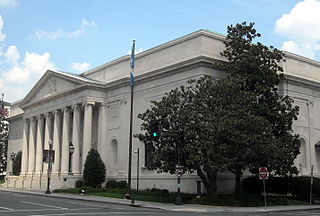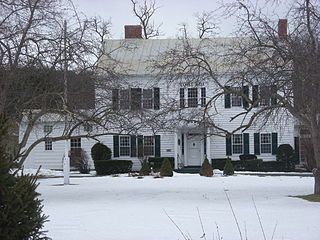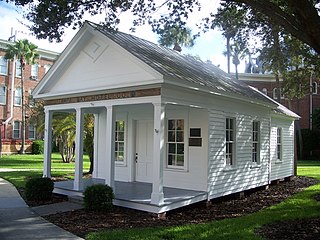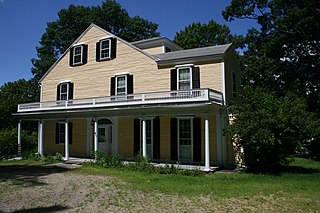 W
WThe Daughters of the American Revolution (DAR) is a lineage-based membership service organization for women who are directly descended from a person involved in the United States' efforts towards independence. A non-profit group, they promote education and patriotism. The organization's membership is limited to direct lineal descendants of soldiers or others of the Revolutionary period who aided the cause of independence; applicants must have reached 18 years of age and are reviewed at the chapter level for admission. The DAR has over 185,000 current members in the United States and other countries. Its motto is "God, Home, and Country".
 W
WMaryly Van Leer Peck was an American academic, founder of Guam Community College, first female president of Polk Community College aka Polk State College, first woman to graduate with a degree in chemical engineering from Vanderbilt University, first woman to receive an M.S. and a Ph.D. in engineering from the University of Florida, first female president of a Florida community college.
 W
WThe National Society Children of the American Revolution (NSCAR) was founded on April 5, 1895, by Harriett Lothrop. The idea was proposed February 22, 1895, at the Fourth Continental Congress of the National Society, Daughters of the American Revolution (DAR). The organization was promptly chartered by the United States Congress, and NSCAR, is now the nation's oldest and largest, patriotic youth organization. NSCAR offers membership to anyone under the age of 22 who is lineally descended from someone who served in the Continental Army or gave material aid to the cause of freedom in the American Revolution. There are three parent organizations: DAR, Sons of the American Revolution, and Sons of the Revolution.
 W
WThe D.A.R. State Forest is a publicly owned forest with recreational features located mostly in the town of Goshen with some spillage into neighboring Ashfield, Massachusetts. Activities center around Upper and Lower Highland Lakes. The state forest encompasses 1,728 acres (699 ha) and is managed by the Department of Conservation and Recreation.
 W
WThe D.A.R. State Forest is a state forest located in Pine County, Minnesota. It is named after the Daughters of the American Revolution and is located east of Banning State Park. There are no facilities in the forest established for outdoor recreation activities, including hiking. Visitors are recommended to stay at nearby Banning State Park, Nemadji State Forest, or General C. C. Andrews State Forest.
 W
WDAR Constitution Hall is a concert hall located at 1776 D Street NW, near the White House in Washington, D.C. It was built in 1929 by the Daughters of the American Revolution to house its annual convention when membership delegations outgrew Memorial Continental Hall. Later, the two buildings were connected by a third structure housing the DAR Museum, administrative offices, and genealogical library. DAR Constitution Hall is still owned and operated by the National Society of Daughters of the American Revolution. It was designated a National Historic Landmark in 1985. It has been a major cultural center of the city since its construction, and houses its largest auditorium.
 W
WDaughters of Revolution (1932) is a painting by American artist Grant Wood; he claimed it as his only satire.
 W
WThe flag of Arkansas, also known as the Arkansas flag, consists of a red field charged with a large blue-bordered white lozenge. Twenty-nine five-pointed stars appear on the flag: twenty-five small white stars within the blue border, and four larger blue stars in the white diamond. The inscription "ARKANSAS" appears in blue within the white lozenge, with one star above and three stars below. The star above and the two outer stars below point upwards; the inner star below points downwards. The flag was designed by Willie K. Hocker of Wabbaseka, a member of Pine Bluff Chapter of the Daughters of the American Revolution.
 W
WThe flag of Missouri, often referred to as the Missouri flag, is the state flag of the U.S. state of Missouri. It consists of three equal horizontal tribands of red, white, and blue stripes, with the arms of Missouri in the center. Designed by Mary Elizabeth Oliver, the red and white stripes, as is traditional, represent valor and purity, respectively. The blue represents three things: the permanency, vigilance, and justice of the state. The three colors also highlight the French influence on the state in its early years. The Missouri flag was established on March 22, 1913, when governor Elliot Woolfolk Major signed the State flag act making it official.
 W
WFort Early was on the Flint River, in the southwest corner of modern Crisp County, Georgia. It was named for Georgia governor Peter Early. It was, in 1814, no more than breastworks built by the Army on high ground overlooking the river, briefly occupied in preparation for a projected invasion by British forces, a threat which disappeared in 1815 with the end of the War of 1812.
 W
WFort King was a United States military fort in north central Florida, near what later developed as the city of Ocala. It was named after Colonel William King, commander of Florida's Fourth Infantry and the first governor of the provisional West Florida region.
 W
WFort Nelson Chapter of the Daughters of the American Revolution Chapter House is a historic Daughters of the American Revolution clubhouse located at Portsmouth, Virginia. It was built in 1935, and is a 1 1/2-story, Colonial Revival style frame building. The building appears much like a 20th-century adaptation of a wood-frame Tidewater House. It features a central entrance sheltered by a Classical overhang supported by scrolled brackets.
 W
WThe Founders of the Daughters of the American Revolution is a sculpture located beside Constitution Hall in Washington, D.C., United States. Dedicated in 1929, the sculpture was created by artist and socialite Gertrude Vanderbilt Whitney in honor of the four founders of the Daughters of the American Revolution (DAR): Mary Desha, Mary Smith Lockwood, Ellen Hardin Walworth, and Eugenia Washington. The sculpture is one of three outdoor artworks in Washington, D.C. by Whitney, the other two being the Titanic Memorial and the Aztec Fountain at the Pan American Union Building.
 W
WHabersham Memorial Hall is a historic building in Atlanta, Georgia, United States. The building, named in honor of Joseph Habersham, was designed by Henry Hornbostel to serve as the headquarters for the local chapter of the Daughters of the American Revolution. The building was constructed between 1922 and 1923 and was added to the National Register of Historic Places in 1974.
 W
WLasell Hall, also known as D.A.R. Hall, is a historic home located at Schoharie in Schoharie County, New York which was listed on the National Register of Historic Places in 2002. It was built around 1795 is a 2+1⁄2-story, five-bay timber framed Federal-style house, with several wings in the back. It was designed to be both a tavern and a residence. Since 1913, it has been owned and maintained by the Schoharie Chapter of the Daughters of the American Revolution.
 W
WThe Louisiana Purchase Historic State Park commemorates the initial point from which the lands acquired through the Louisiana Purchase were subsequently surveyed. The park encompasses 37.5 acres (15.2 ha) of forested wetlands, a landform which is regionally in decline due to agricultural development practices that include draining such areas. On the survey point is a 6-foot (1.8 m) marker erected in 1926 by the L'Anguille Chapter of the Daughters of the American Revolution It was listed on the National Register of Historic Places and designated as a National Historic Landmark.
 W
WMadonna of the Trail is a series of 12 identical monuments dedicated to the spirit of pioneer women in the United States. The monuments were commissioned by the National Society of Daughters of the American Revolution (NSDAR). They were installed in each of the 12 states along the National Old Trails Road, which extended from Cumberland, Maryland, to Upland, California.
 W
WThe Memorial Continental Hall in Washington, D.C. is the national headquarters of the Daughters of the American Revolution (DAR). It is located at 1776 D Street NW, sharing a city block with the DAR's later-built Administration Building, and Constitution Hall. Completed in 1910, it is the oldest of the three buildings. It was the site of the 1922 Washington Naval Conference, a major diplomatic event in the aftermath of World War I. The building was declared a National Historic Landmark in 1972.
 W
WPaulus Hook is a community on the Hudson River waterfront in Jersey City, New Jersey, located one mile across the river from Manhattan. The name Hook comes from the Dutch word "hoeck" which translates into "point of land." This "point of land" has been described as an elevated area, the location of which is today bounded by Montgomery, Hudson, Dudley and Van Vorst Streets. The neighborhood's main street is the north- and south-running Washington Street. The waterfront of Paulus Hook is along the basin of the Morris Canal in a park with a segment of Liberty State Park. The Hudson-Bergen Light Rail has a Paulus Hook stop at Essex Street and the Liberty Water Taxi at Warren Street. The introduction of the light rail and development of office buildings on the Hudson Waterfront have brought more businesses to Morris Street including a number of restaurants with outdoor seating and small neighborhood shops.
 W
WThe Old School House was a historic school in Tampa, Florida, United States. It was constructed in 1858 and has been moved twice. It is an example of Greek Revival architecture and has 1-story, is of frame construction, has clapboarding, and is ornamented with a pedimented tetrastyle portico. It is located on the University of Tampa campus. On December 4, 1974, it was added to the U.S. National Register of Historic Places. The Schoolhouse is funded by the DeSoto Chapter, National Society Daughters of the American Revolution since 1931.
 W
WThe Kate Duncan Smith DAR School is a K-12 public school in Grant, Alabama.
 W
WThe Jacob Leisler Monument is a bronze sculpture created by American artist Solon Borglum and located in the city of New Rochelle, in Westchester County, New York. The monument was erected by the Huguenot Chapter of the Daughters of the American Revolution, and the Huguenot Association of New Rochelle to the memory of Jacob Leisler, 17th-century advocate of the Huguenot settlers and said to be the first chief executive of the province of New York to draw his power directly from the people. The unveiling of the statue on June 24, 1913, was the principal event in the celebration of the 250th anniversary of the founding of New Rochelle. The monument, cast by the Roman Bronze Works, is the only existing statue of Leisler.
 W
WThe Tamassee DAR School is a school in Tamassee, South Carolina, founded in 1919 by the Daughters of the American Revolution to serve the underprivileged children of Appalachia. Historic buildings can be observed on the DAR School campus. The school survives and thrives to this day, consistently graduating classes of children between the ages of 7 and 18.
 W
WThe Timothy Paine House, also known as The Oaks, is a historic house at 140 Lincoln Street in Worcester, Massachusetts. Built in the mid-1770s, it is one of the city's oldest buildings, and a good example of Georgian and Federal styling. It was built by Timothy Paine, a note local judge who fled during the American Revolution due to his Loyalist leanings. The house has been owned by the Colonel Timothy Bigelow Chapter of the Daughters of the American Revolution, since 1914 and uses it as a chapter house. It is open by for tours from May- October or by appointment. The house was listed on the National Register of Historic Places in 1976.
 W
WThe Tousley-Church House is located on North Main Street in Albion, New York, United States. It is a brick house in the Greek Revival architectural style built in two different stages in the mid-19th century.
 W
WTuckahoe, also known as the Leach Mansion or as the Mansion at Tuckahoe, is an historic home located at 1921 North East Indian River Drive in Jensen Beach, Martin County, Florida. The name was thought to be a Native American word for "welcome". It is inside the present day Indian RiverSide Park and is atop the Mount Elizabeth Archeological Site, which was added to the National Register of Historic Places on September 14, 2002.
 W
WThe flag of the state of Wyoming consists of the silhouette of an American bison. The red symbolizes the Native Americans and the blood of pioneers who gave their lives. The white is a symbol of purity and uprightness. The blue is the color of the skies and distant mountains. It is also a symbol of fidelity, justice and virility. The bison represents the local fauna, while the seal on it suggests the custom of branding livestock.